#American Playboy The Hugh Hefner Story
Explore tagged Tumblr posts
Text
Филми и сериали: Септеври част 1
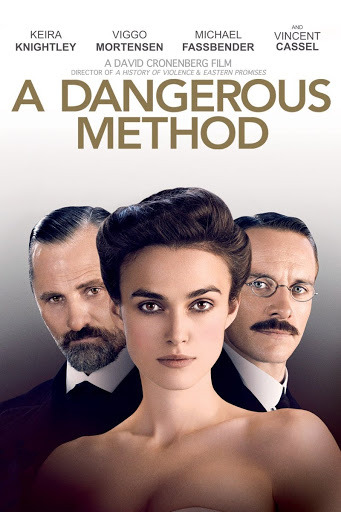




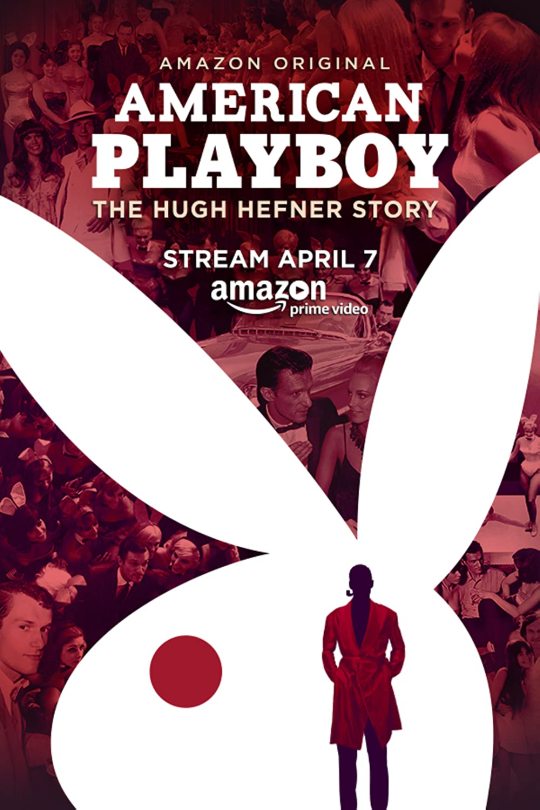








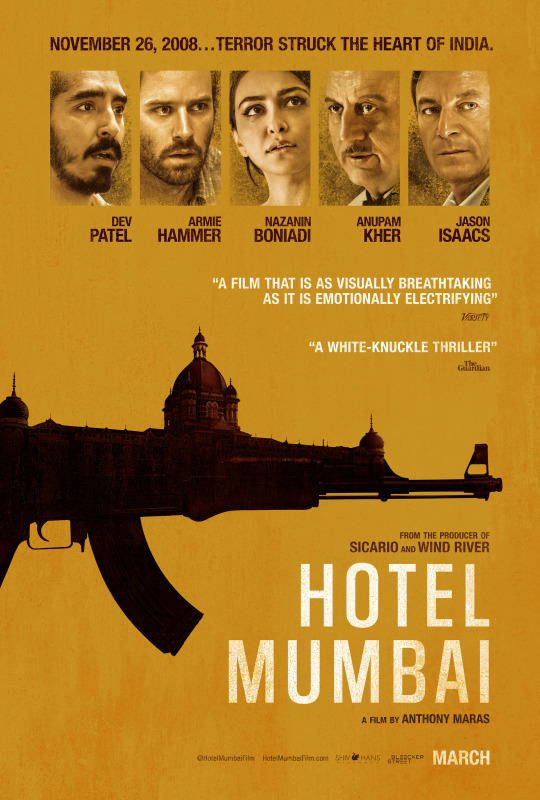




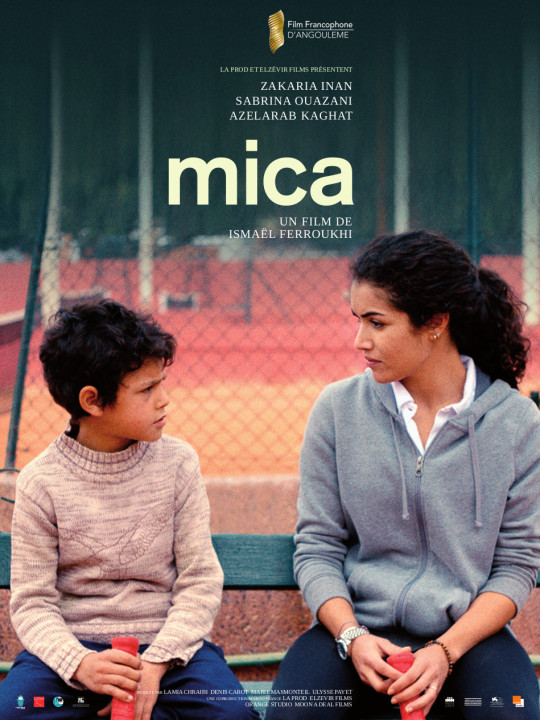
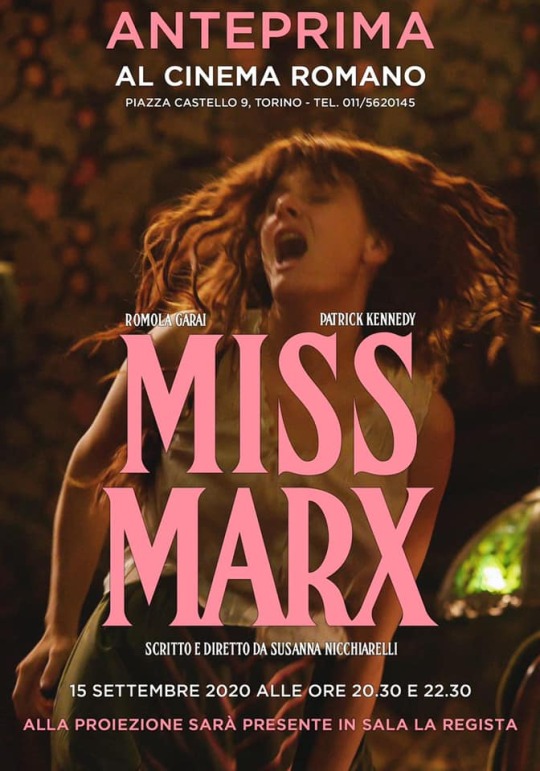
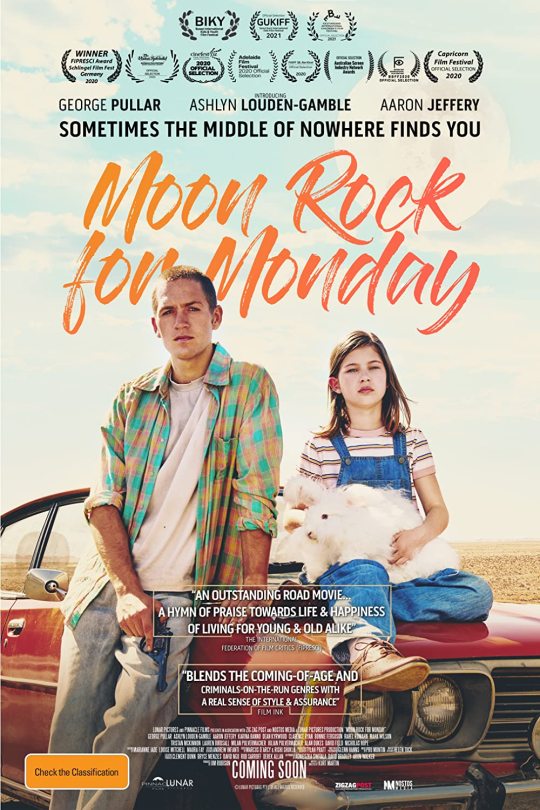


#филми#сериали#септимври#част 1#A Dangerous Method#Abzurdah#After Ever Happy#Agora#Amants#American Playboy The Hugh Hefner Story#Ayla The Daughter of War#Blonde#Ce que le jour doit à la nuit#Cigare au miel#Do Revenge#Everything I Am#For Ahkeem#Goodbye Christopher Robin#Hotel Mumbai#Inventing Anna#Like Minds#Lion#Marie Krøyer#Mica#Miss Marx#Moon Rock for Monday#No tengas miedo#On the Basis of Sex
3 notes
·
View notes
Text


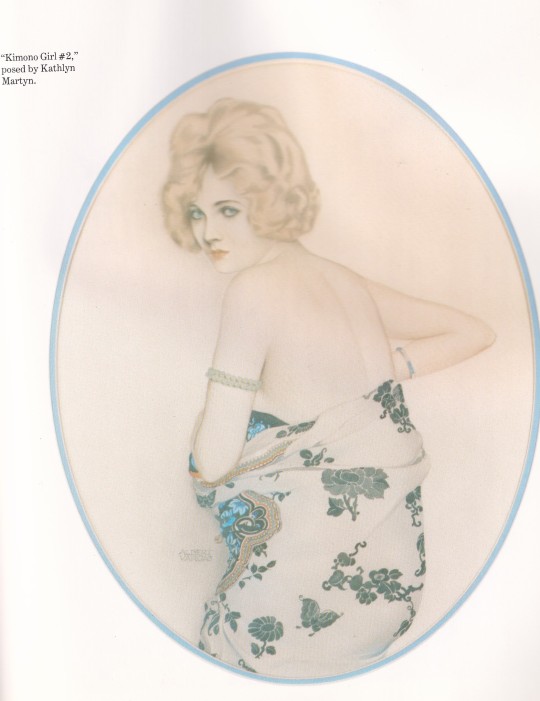


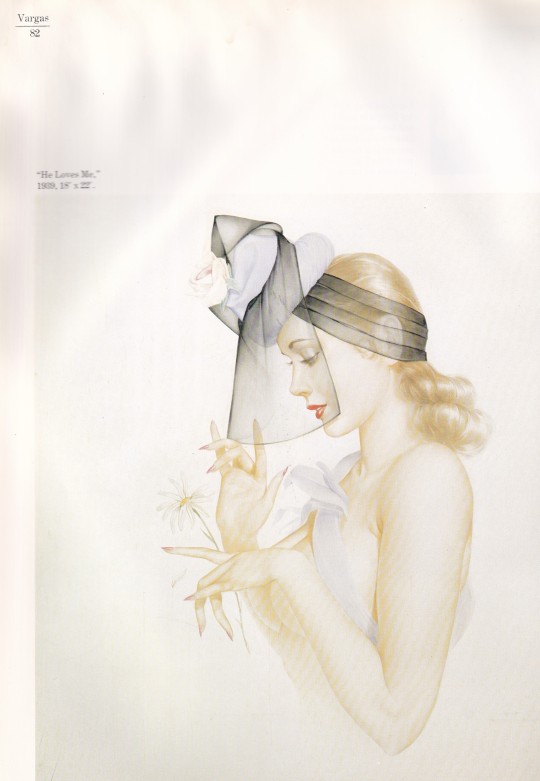
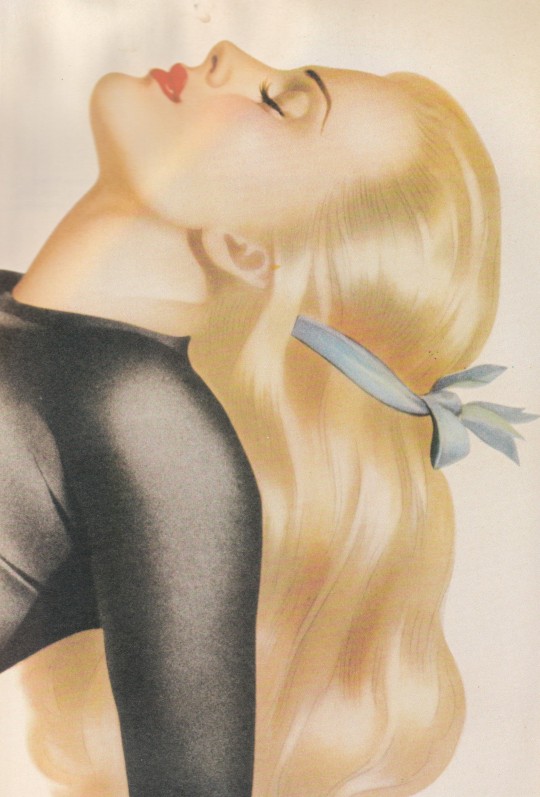

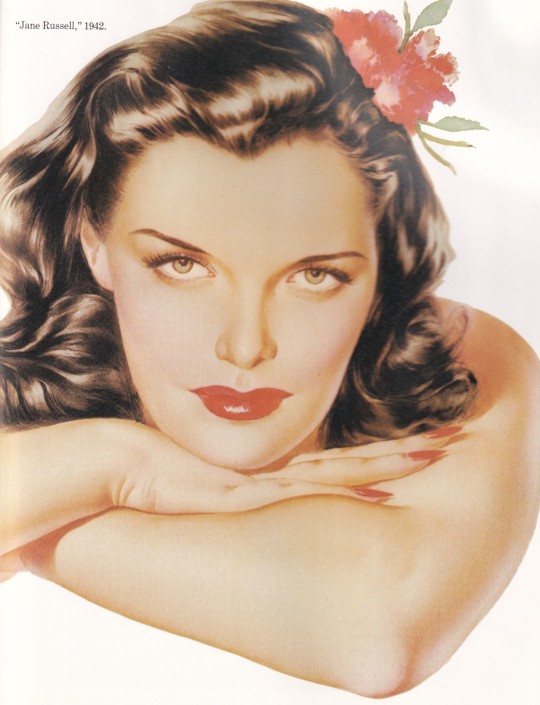
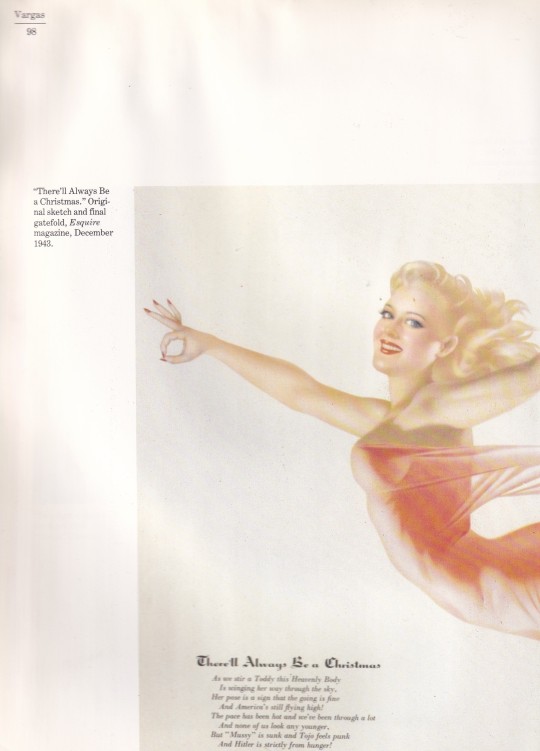
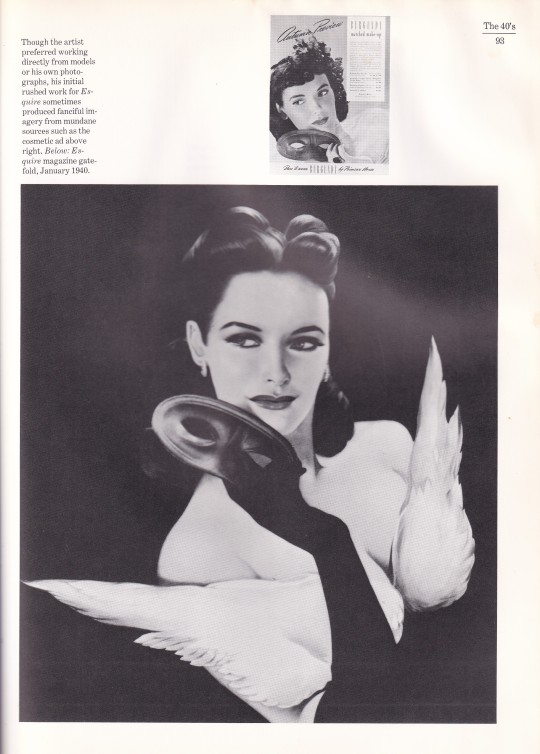
Vargas
Alberto Vargas and Reid Austin
Foreword by Hugh Hefner
Bell Publ., New York 1978, 128 pages, 23x31cm, ISBN 0-517-3365X Edges of boards are faded and slightly soiled.
euro 50,00
email if you want to buy [email protected]
Joaquin Alberto Vargas y Chávez (9 February 1896 – 30 December 1982) was a Peruvian-American painter of pin-up girls. He is often considered one of the most famous of the pin-up artists. Numerous Vargas paintings have sold and continue to sell for tens of thousands around the world.
For more than sixty years, Alberto Vargas has been celebrating the American woman in all her beauty and sensuousness. Now, accompanied by his remarkable life story, 160 of Vargas's most lushly alluring paintings have been gathered together in one exquisite volume. Voluptuous beauties from every period ahead: the Ziegfelde Follies girls, the glamorous Hollywood sex goddesses, and, of course, the inimitable Vargas Girls - those sensational creatures hwo have been gracing the pages of Esquire and Playboy magazines for nearly forty years. Vargas is a spectacular showcase of the art of the pin-up
20/12/23
#Vargas#Alberto Vargas#Ziegfield Follies girls#Vargas girls#Esquire#Playboy magazine#art of the pin-up#illustration books#fashionbooksmilano
105 notes
·
View notes
Text

LeRoy Neiman (American, 1921-2012)The Eye, Playboy, 1966. Oil on board. 32 x 24 inches (81.3 x 61.0 cm). Signed and dated lower left. PROVENANCE: The Norton Herrick & Curtis Hendrix Fine Art Group, Inc.; Dyansen Gallery, California; Private collection, California.
EXHIBITED: London Playboy Club, London, 1966-85; Chicago Playboy Club, Chicago, Illinois 1985-86.
When LeRoy Neiman and Hugh Hefner met in the early 1950's, it cultivated a relationship of over 50 years. Hefner was fascinated with Neiman's fashion illustrations for the Carson Pirie Scott department store chain and soon after hired Neiman to work for Playboy. Neiman's new technique experimenting with enamel paint was a stylistic hybrid of Abstract Expressionism and Impressionism.
Typically, these Playboy covers consisted of full-length women seductively posing for the voyeur. Of the 11 magazine covers painted, The Eye is the most unique as it allows the viewer to imagine who is the brunette woman that we only get a glimpse of. Hefner could have picked any other cover to represent the iconic magazine, but he selected The Eye cover to be part of the collection, leaving us to use our creative minds to construct the rest of the figure. His signature use of bold lines, vivid colors, and abstract brushwork along with the iconic "PLAYBOY" lettering makes this original painting recognizable and dynamic. Neiman's long and successful association with Playboy was the prelude for some of his most distinguished work. We are very excited to feature this work in our upcoming auction!
The idea that "the whole is greater than the sum of its parts" certainly can be applied to people. Think Rodgers and Hammerstein. Abbott and Costello. Mantle and Maris. Neiman and Hefner.
It is somewhere between unfair and absurd to suggest that LeRoy Neiman's rise to an artist beloved around the world is solely a result of his friendship with Hugh Hefner. But it would be equally inaccurate that they did not both benefit from their decades of friendship.
After he became friends with the longtime publisher of Playboy magazine, he landed something of a dream job when Hefner helped the magazine commission an illustration in 1954 for the fifth issue. As Neiman's friendship with Hefner grew, so too did is role with the iconic men's magazine. Before long, he was sent to major sporting events, concerts, or gala events at casinos, telling his stories through eye-grabbing paintings and drawings conjured in a brilliantly colorful expressionist style that became instantly identifiable with the artist who created it.
"LeRoy Neiman's Man at Leisure editorial in Playboy magazine illustrated the excess and irreverence of the 1960s," Heritage Auctions Vice President Todd Hignite said. "In this time of social revolution, Neiman captured glamorous snapshots of life with his brush. Nowhere is this more evident in his renditions of Playboy magazine covers as seen in The Eye. Unlike most of the Playboy covers, this deceptively modest and alluring cover captures the bold and flirtatious new world of the 1960s."
This lot is accompanied by a copy of the Playboy Magazine that is signed by the Artist on the cover and on page 114. This lot is also accompanied by a letter of authenticity from Dyansen Gallery, California, dated October 30, 1989. https://tinyurl.com/3bafnmb6
19 notes
·
View notes
Text
On the inaugural night of the Chippendales club, the audience’s disbelief at the sight of a half-dozen men dancing and disrobing quickly melts into delight. The financially struggling owner, Somen (Steve) Banerjee (Kumail Nanjiani), has named his Los Angeles establishment for an eighteenth-century cabinetmaker whose rococo designs, Steve claims, adorned the residence of the viceroy of India. The venture may well be the earliest of its kind: a mainstream venue for striptease, by men, for women. The visual appeal of the amateur gyrators, who swan about on a sunken stage in the center of the room, to the Village People’s “Macho Man,�� is questionable: they sport muscles and skimpy black underwear, but also mullets and long, greasy curls. Their looks may not matter much anyway; the hooting women are thrilled just to play the part of men for a night. But, for some, a real show needs more than role reversal. “Talk about a flaming pile of trash,” the choreographer Nick De Noia (Murray Bartlett) says at a later performance, when Steve asks him to leave. (Male patrons are not allowed.) In less than a decade, the two men, working in tandem, turn Steve’s frantic experiment into a national sensation, and lock themselves in a rivalry so radioactive it cannot but end in mutual destruction.
Opening in the late nineteen-seventies, Hulu’s “Welcome to Chippendales” is a night-club-lit comic tragedy that traces the spectacular rise and sordid fall of a cheesy yet pivotal corner of the sexual revolution. The series’ initial pleasures coalesce around the streamlining of the production numbers and the chiselling of its mall-sexy, Ken-doll-on-steroids camp aesthetic. Nick hires dancers who can move in unison—some, like Otis (Quentin Plair), boast professional stage experience. The troupe’s costumer, Denise (Juliette Lewis), smooths out the act’s kinks by supplying tearaway pants. Dorothy Stratten (Nicola Peltz), a Playmate turned rising actress, whose slimy, controlling husband, Paul Snider (Dan Stevens), talks his way into a small stake in Chippendales, is responsible for what becomes the brand’s signature flourish: the stand-alone cuffs and collars, inspired by the bunny uniforms at the Playboy Club. (When bean-counting Steve first meets Dorothy, he’s impressed—not by her title or her soft yet staggering beauty but by her acquaintance with Hugh Hefner.) As the business’s original mastermind, Steve goads a church group into protesting the club, then calls up a local TV station, garnering his “den of perversion and sin” some free publicity on the evening news.
Those who know Chippendales only from the “Saturday Night Live” sketch or as a popular Las Vegas revue may be surprised to learn of the organization’s violent history: in the early nineties, the real-life Banerjee pleaded guilty to racketeering, attempted arson, and murder for hire. It’s fitting, however, that the Hollywood version of this story focusses on a briefly magical collaboration that turns toxic over credit-hogging. The showrunners Jenni Konner (“Girls”) and Robert Siegel (“Pam & Tommy”) nurse ambitions of sociological insight in their reimagining of an Indian immigrant whose American Dream takes the form of a queer white man’s channelling of suburban-female desire. And yet the writers are also loath to relinquish the story’s twisty, true-crime roots. The result is an ideas-rich but disjointed series that feels like it’s tackling too much, yet somehow hardly enough, with a protagonist whose motivations are subject to whatever wild happenstance the scripts are setting up next. (Why does Steve idolize Hefner? And what does he think of his own improbable role in granting a greater degree of sexual agency to the kinds of women who might not consider men like him—brown, speaking accented English, financially unsteady in a disreputable industry—a viable sexual or romantic partner? “Chippendales” is strangely uninterested in the answers.) As the eight-episode season progresses, and the stripteases become sleeker, the show around them only gets messier.
No one enjoys the club’s runaway success for long. Nick, a Sondheim-loving snob with two Emmys that he won’t let anyone forget about, is tortured by the artistic challenge of having to top his own themed stagings. (An early favorite: shirtless bellhops thrusting against an ecstatic becardiganed hotel guest on a spinning fourposter bed—a genteel porn scenario that simultaneously emphasizes the woman’s allure and class status.) Although many hands went into building Chippendales, Nick knows, as does pretty much everyone else, that it is his genius that sustains it as an attraction. After a coke-fuelled bender, he and Denise decide that the most logical way to level up the stage show is by mounting “Hunkenstein,” a horror-tinged rock opera, to be performed by a live band, about the creation of the ultimate beefcake, assembled from the exceptional parts of various men. Steve’s angry rejection of the pitch poisons the well of his relationship with his choreographer. Every subsequent no from the boss further convinces Nick that he is “Mr. Chippendales,” a meaningless designation that he’s happy to trumpet on national television as he turns the production into a franchise and a tour, stoking Steve’s rancorous, scheming rage.
The divalicious Nick is the series’ only fully realized character, though Lewis and Annaleigh Ashford, who plays Steve’s charmingly practical wife, Irene, lend their scenes a lived-in sweetness that their narcissistic male counterparts resist. (Bucking the trend in recent strip-centric entertainment such as “Magic Mike,” “Hustlers,” “Zola,” and “P-Valley,” which reframe exotic dance as labor, sometimes under precarious or perilous conditions, the performers here, save one, are little more than a huddle of glistening torsos.) Compared with the supernova that is Nick, who is endowed with every last drop of Bartlett’s considerable charisma, Steve is a cold, gray moon. His arc is grander, though, transforming him, à la Walter White, from a striving underdog into a self-pitying sociopath. Nanjiani is serviceable as an actor from scene to scene, but he can’t find his character’s core, and receives little help from the writing. The racial microaggressions that Steve regularly endures are flat and obvious, almost P.S.A.-like. His biography is frustratingly spartan; the series only suggests, and barely makes coherent, why he moved to the U.S. and, before Chippendales, sacrificed half a decade of his life to an ascetic existence as a gas-station manager, subsisting on expired sandwiches, despite having enjoyed a comfortable life back in India. It’s only when Steve decides to wield America’s racial hierarchy against other minorities in pursuit of his own upward mobility—a dramatization of the middle ground between white and Black America that many Asian Americans occupy—that the series periodically achieves the political relevance it fumbles toward.
When Nick signs up Otis, the most talented of the auditioning dancers, Steve hesitates, noting, “He is Black.” Then he sees an opportunity in Otis’s race: “Customers will love it.” Both Steve and Nick turn a blind eye to the way their mostly white clientele single out the token dancer of color for particularly loutish objectification, grabbing Otis’s head for a kiss or reaching inside his briefs despite his clear discomfort. (“You don’t really get that at Lincoln Center,” Nick jokes.) Otis, who admires Steve’s achievements as a “brown-skinned brother . . . making shit happen for himself,” seeks racial solidarity with his employer, who sees his own hunger reflected back at him in a flattering light. But the entrepreneur, always sniffing around for a shortcut, realizes that the fastest way to climb up is by stepping on others. Steve’s misfortune is not that he’s wrong but, rather, that he lacks the wealth and the connections to discriminate at scale. America may be where Steve aspired to reinvent himself, but his adoptive home is relentless in making sure he knows his place. ♦
3 notes
·
View notes
Text
Hugh Hefner & His Playboy Empire: The Rise, Legacy, and Controversy
Explore the life, legacy, and controversies of Hugh Hefner, the man behind Playboy. From his rise to fame to the Playboy brand's transformation today, uncover the story of an icon. #globalicon
When you think of American pop culture, few names evoke as much curiosity and controversy as Hugh Hefner. Known as the founder of Playboy magazine, Hefner revolutionized media and sexuality in ways that still reverberate today. This article dives into the multifaceted life of Hugh Hefner, exploring his early days, the launch of Playboy, his influence on popular culture, and the lasting…
0 notes
Text
Are the allos ok?
“One of the more obvious examples of compulsory sexuality is the fear of a sexless population. It is a great irony that despite hand-wringing over loose morals, Americans are having less sex than before. [...] As for American adults, in the 2010s, they had sex about nine fewer times per year than a quarter-century earlier. Such findings have prompted cover stories about “sex recessions” (a recession, naturally, is not a good thing), articles about how the sex recession could lead to an economic recession and hand-wringing comments over how young people are doing it wrong and are boring now. [...] Americans, according to some researchers, have traded the pleasures of genital stimulation for the pleasure of likes on social media and binge-watching The Great British Baking Show. In one Washington Post article about the decline of sex, an eighteen-year-old is described as sitting in front of “several screens simultaneously: a work project, a YouTube clip, a video game.” For him, abandoning this setup for a date or a one-night stand “seems like a waste.” [...] The loser of today has three computer screens and no sex drive. Such articles imply not only that sex is normal and wonderful but also that sex is the main source of adventure [...]. The existence of these associations can be traced back, in part, to the commodification of sex. Sex sells, and sex makes other things easier to sell. Hugh Hefner’s Playboy, often credited for this shift, did not merely provide photos of naked women. Playboy provided a vision of the good life, of what real men did with their time and money, and that included using their purchasing power to buy the attention of gorgeous models and access to orgies. When sex is a commodity, having and flaunting sex becomes a form of conspicuous consumption, used to signal that we are not passionless, uptight, boring, and robotic but instead have the financial and social capital to be hip and fun and high status and multiorgasmic.”
-
ACE by Angela Chen
#I know this is highly problematic but at the moment I just feel like laughing#allo problems#compulsory sexuality#asexuality#asexual
5 notes
·
View notes
Text
HEAR ME OUT: PARIS HILTON INSPIRED ME TO GO TO ART SCHOOL
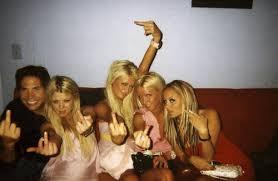
HEAR ME OUT: PARIS HILTON INSPIRED ME TO GO TO ART SCHOOL AND BECOME A FILMMAKER.
My sister and I played it cool until my parents dark purple grand caravan left the driveway. We knew we had to conceal our excitement of being home alone for a few hours in order to not seem suspicious. It was our chance to watch whatever trash was on television that day without the normal censorship our parents had set on us. My mother strived to win the gold medal for being a helicopter parent and my dad just agreed with whatever she said. Somehow we were always a step ahead of them. There was a vast lack of communication within my household which lead me to crave answers and sneak around to get them.
We really made a day of it. We pulled our big fluffy comforters off our beds and brought them to the couch, gathered every unhealthy snack from our cabinet (which was difficult as my mother kept a strict, low carb, low sodium, no sugar menu to chose from in our house) and hung heavy blankets over the windows to block out the glare on the 30 inch Panasonic VHS combo unit. My older sister, Cate, had control over the remote, she knew which channel number MTV played on and she memorized the Parental Control Password that was set on various channels that aired the exact rubbish it was to protect us from, but quickly became our favorite shows. At the time I didn’t even really know how Cate found out these shows existed. Our amount of media consumption was little to none. Living in a tiny town in Pennsylvania, attending private Christian school and hardly having a social life; our only connection to whats out there
would be the local blockbuster that my mother skirted us in and then quickly out of after renting wholesome family movies. I remember slipping away from my moms watch just long enough to find the “1 Night in Paris” sex tape DVD that was made in 2004 with Rick Salomon (who by the way has been married to Pamela Anderson TWICE!) and Paris Hilton as the star. A few years later, The Simple Life, featuring Paris Hilton and Nicole Richie became a huge success for Fox and was later taken over by E! network. The glimpse of the DVD cover was so scandalous I felt guilty just for looking at it. We were a few years late, really just catching the reruns of the show that E!, MTV or VH1 would play during the middle of the day, but we ate it up nonetheless.
The first episode I ever watched was on Season 5. The two girls become camp counselors and every week a different theme and set of campers come in to encounter their shenanigans. This episode was “Fat Camp” and the first order of business was for Paris and Nicole to give the campers enema’s before they start their week of dieting and exercise. It was absolutely ridiculous. I felt bad that these campers who fell victim to their bratty comments, yet my sister and I couldn’t take our eyes off it. Reality TV works in that way you know, where you feel bad, but not bad enough because its not your life.
Soon Cate and I started adding other reality shows to our pallet of rebellion. The Girls Next Door, a reality show about Hugh Hefner’s girlfriends living in the Playboy Mansion. Real World Cancun, AKA Jersey Shore before there was Jersey Shore. And of course The Hills where Lauren Conrad and Heidi Montag live it up in Orange County, a place I
thought was made up until I visited there in 2014. But the Simple Life remained my favorite of them all. But Paris Hilton was my first glimpse of glamour, so she always remained my favorite. Granted, Kim Kardashian has seemed to surpass her on many levels after starting out as her intern. And sure maybe Paris is an heiress who will never run out of money or resources and people behind her, producing her, but Miss Hilton found a savvy way to brand herself right at the pinnicale of the internet and she still had to work for it. As a filmmaker I am hyper aware of the way we consume media, which is why I’ve taken such an interest to Paris and this manipulation she had turned into an art form.
Before we go on, in case you don’t know how Paris got famous, I’m here to give you a brief backstory. Paris Hilton, heiress to the Hilton Hotels empire, was actually raised a lot like me. Her parents were strict. She wasn’t allowed to wear makeup or have much of a social life. I believe her parents knew what kind of name she bared and the harsh reality that could come with it, so they kept her on a tight leash. Despite their efforts to keep her tame she slipped away, out into the world long enough to meet famous photographer David LaChapelle, who became enamored with Paris and her sister Nicky, and insisting he take their photo. She knew it was highly against her parents rules to engage in that kind of activity but she went for it. He designed an elaborate set and costumes for them and they went ahead naively thinking the photos would be just for them to admire in private but were later were published in a 2001 Vanity Fair issue, getting her in a whole lot of trouble. She later had to turn down and offer to do Playboy because her parents would disinherit her. By the time she was 18 her career as a model
and professional partier could really take off. Paris became absolutely obsessed with fame. She came up with a formulated routine on how to grab the paparazzi’s attention. She would find all the places photographers would be hanging out that day and go to every single location just to be seen and her plan really seemed to work. She was the bright and shining star of every tabloid in America. She describes in the documentary film, “American Meme” how desperate she was, spending hours searching for a place with someone, anyone to take her picture no matter what it took. Her paparazzi access seemed responsible for Paris to become a household name. — add on?
We have to remember that this time, 2007-2009, was a turning point, as smart phones and blackberries were now in almost every American’s pocket and we were craving the tea more than ever. Tabloids started working around the clock to deliver us the latest scoop at the now possible all hours of the day; i.e. the tragedies of Amy Whinehouse, LiLo and her drug escapades, Britney Spears and her hairless melt down, the list goes on. We asked for it, we got it and kept asking for more. After Paris sought out these outlets, the offers poured in. Her own show, movie roles, modeling for brand name designers, she became a DJ, became an author, a business woman, a fashion designer she owns hotels in Dubai and is currently carrying a hefty 10.5 million instagram follower count.
I know what you’re thinking, like okay so who cares about this rich “bimbo” (dubbed courtesy of a New York Post article circa 2007) but just hear me out. Most of us can relate to her story and if not, at least to some of her tactics. What I grew to realize after becoming social media obsessed (possibly because I was deprived as a child) is that
no matter how information changes or what new technology comes to pass it along to us, we will always be doing it in the same way. I watched Myspace come and pass, seeing thousands of singers, bands and actresses get discovered through that site, even some playmates in Playboy magazine. I saw Facebook allow us to put every single thing about our lives on blast at any minute of the day. Twitter allows us to barf our thoughts up in once 180, now 280 characters, Vine stars made 6 seconds videos and now make 6 figures from their fame and last but not least Instagram, and trust me when I say I cringe having to say this, “influencers” sell to us with every photo or video they post. Whether that be a lifestyle, a product or just themselves as a person. A vast majority of us have to admit that we are drinking the juice. We ourselves are partaking in marketing our “best life” being lived via Instagram. So ask yourself, what is the difference between what we are doing on the Gram versus what Paris was doing in 2006, showcasing her persona to the media in the only way it was accessible at the time? Why not manipulate it the same way it manipulates us? Find out where the quote on quote Paparazzi are and market yourself the same way reality stars did.
Not that I have the intention to come up in the same way some of these heiresses who’s names are already famous or these vine stars or twitter comedians did but I have the power to show a portion of the world who I am and what I can do to earn my career as a filmmaker and communicator via social media.
I realized that what I was doing as a little kid, waiting for my parents to leave to seek a world outside my own is exactly what Paris did. She took the risk and got the answers.
Her obsession with fame coincided with my obsession with social media, to communicate and or get my work out there. I’m just trying to work system to brand myself. My research shows that the reality show we down load from an app store and place in our pockets has led me to some big wins. Upon getting hired for shoots or my work recognized in some way, I see there is a formula to the entire thing. When to post, how to post, who to follow, etc. I have no producers behind me to curate my Instagram, I have no connection to someone with a big name. All I have is myself to show for what I can do and if I keep going back to the place with the most access to the loudest voices , like Paris did I may have a shot at getting my own voice out there and I will say more important things than “thats hot” I promise you.
In the end I think that the reason I clung to Paris and her story so deeply was because it was virtually first and foremost example I had and to as impressionable young woman, that kind of thing sticks. The definition of success and how to obtain it was taught to me was by sneaking her show on a Saturday afternoon while my parents when to Shop Rite without me. I’ve just stayed observing all the ways fame has developed via internet and can lead to success. But the beauty of the defying gravity factor is that this blond “bimbo” and many other “bimbos” like her have done the same thing, most without the Hilton name. All I did was think twice before I believed that reality television was just a trashy phase. Instead I realized that I, like many others, am still consuming similar content in 2009 now in 2019, the difference is its in the palm of my hand and I’m deciding to take advantage of it.
#y2k#paris hilton#nicole richie#new york post#early 2000s#early 2000s fashion#90s fashion#90s nostalgia#90s kid#90s#the simple life#kim kardashian#kylie jenner#art school#pratt#pratt institute#blog post#art blog#journalism#cultural commentary#social commentary#new york#brooklyn#la#los angeles#nyc#photography#disposable camera
8 notes
·
View notes
Text

@raina16 I think you heard jensen wrong lol in this clip he said he got the audition script for soldier boy where his line was “so I was screwing this playboy , Peter Fondas thumb up my ass..” , as if soldier boy was telling a story. it’s locker room talk you’d hear on Howard stern
And the playboy mansion isn’t just Hugh Hefner’s house, I don’t know if you’re not American and just assumed that, it’s more like Studio 54 if Studio 54 was also a brothel for celebrities and people with power. and Jensen brought up that audition script dialogue only that one time, but repeated how soldier boy partied with Hefner often because that’s his characterization

The line you’re talking about didnt even make it in the show and was likely written before Eric was entirely settled on soldier boys characterization, bc what did make it into the show was him being weirded out and making vaguely disapproving faces at gay men and rainbow signs
you’re also, like, you seem like you’re coming from a place of defending jensens queerness because I called soldier boy a straight man’s wet dream. You know he didn’t write the show right? 🥴 he was casted to play the only character who can beat the shit out of the strongest Chad on the planet, who we spent years hating. We weren’t subjected to seeing anything more than jensens safe-for-work ass, & straight male viewers fell in love with him. Yeah, SB is a straight guy’s wet dream. He’s clearly Eric’s at least LMAO
buuut all that being said; you know that queer men can still be misogynistic chauvinists right 🥴 please tell me you know this 🥴 there’s kind of a problem with men treating sex as a conquest regardless of the circumstances 🥴 and it’s an aspect of toxic masculinity that goes completely unchecked which is why playboy successfully branded itself as woke & sex positive for maybe 15 years before the wretched old liver spot finally died @raina16
You know I saw that post of Soldier Boy edited into vintage photos a la Forest Gump, and when I saw the Hugh Hefner one I had the same thought that I had when Jensen was doing the publicity tour and getting excited over playing a character who partied with Hefner at the playboy mansion:
You think he would have been as excited if it was Bill Cosbey or Epstein instead? Would an edit like that be going too far? I end up having to wonder why. As much lip service they paid to us saying that Soldier Boy was a deconstruction of toxic masculinity, he still ended up being a straight man’s wet dream. It’s pretty disturbing, between the feature length documentary/exposé’ coming out, and the widely known fact that Playboy produced CP of Brooke shields when she was 10 and it’s STILL completely accessible to the public, just a google search away. Hell— remember the time, like 2 weeks before 15x18 aired, Kripke tweeted that Dean would be very tempted to vote for Trump because he Fucked a porn star “and, you know, Life Goals”?
God Eric loves himself some sexual conquests. I dunno. When do they stop getting away with shit 🤔
4 notes
·
View notes
Text
American Playboy - The Hugh Hefner Story: Season 1/ Episode 1 "Before the Bunny: Marilyn Monroe" [Series Premiere] - Overview/ Review (with Spoilers)
#AmericanPlayboy - The #HughHefner Story: Season 1/ Episode 1 "Before the Bunny: Marilyn Monroe" [Series Premiere] - Overview/ Review (with Spoilers)
With a strong focus in using archival video when possible, and using actors to fill in the blanks, American Playboy – The Hugh Hefner Story, finds a rather interesting way to liven up the documentary genre. (more…)
View On WordPress
#Amazon#American Playboy - The Hugh Hefner Story: Season 1#Before the Bunny: Marilyn Monroe#Episode 1#Matt Whelan#Series Premiere
0 notes
Quote
The world of Playboy was a profoundly sad one. In photos, Hefner never looks particularly happy, and he was a recluse who didn’t even seem to enjoy the copious amounts of sex he had. (“There was zero intimacy involved… No kissing, nothing.”) Hefner’s fantasy lifestyle was inhuman in every way. It was sex as something mechanical and lifeless, something one did because it was the thing that made you a Playboy, rather than because of true passion. That’s the dark secret about Hefner: he wasn’t even a hedonist. A hedonist pursues pleasure. Hefner didn’t even care about pleasure. He cared about the taming and conquest of women. There’s an important critique of libertarian morality to the Hefner story, too. Hefner was an advocate for freedom from all kinds of government restraint, a champion of the First Amendment and abortion rights (as every obituary has reminded us repeatedly). He was a “passionate libertarian.” Hefner also believed he was changing American morality, saying: “What it really comes down to is an attempt to establish what has been called a new morality… really think that’s what this thing called the ‘American sexual revolution’ is really all about.” (This is taken from the NYT’s charming compilation of Hefner’s “Most Memorable Interview Moments.”) Here we see exactly what happens when “freedom” is taken to be a moral philosophy in itself. Like many libertarians, Hefner wanted to be free, but he wanted to be free from government tyranny only so he could exercise a kind of unaccountable private tyranny. As with libertarianism always, “freedom to be a dick” seems to be the goal. He wanted to establish a “new morality” that would simply let him do as he pleased to women, without any ethical constraints. “Liberty,” while essential, is meaningless unless it is also coupled with a set of standards for how people should actually behave toward one another. I am not actually celebrating Hugh Hefner’s death. It’s sad when people die. By “good riddance,” I don’t mean that I take personal pleasure in his death, but that the world will be better once it rids itself of Hefner’s values. And since Hefner himself was an evangelist for those values until his last days, we are better off without him. (I felt the same way when Antonin Scalia died. I didn’t want him to die; I would have preferred that he had remained alive and simply renounced his horrible beliefs and become a good person. But he never did, so we had to settle for death.)
Current Affairs | Culture & Politics
12 notes
·
View notes
Photo
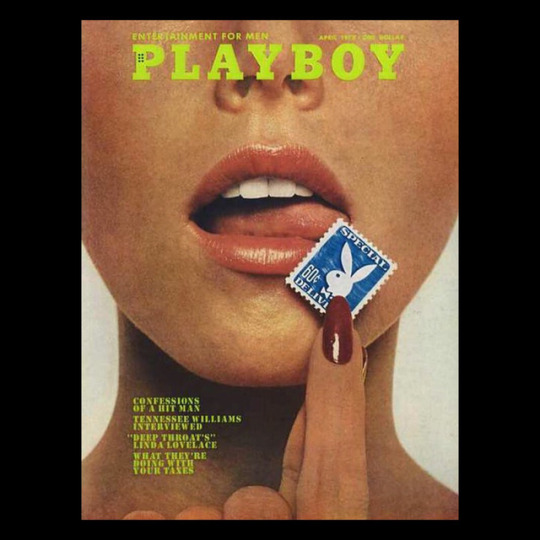
"If you don't encourage healthy sexual expression in public, you get unhealthy sexual expression in private. If you attempt to suppress sex in books, magazines, movies and even every day conversation, you aren't helping to make sex more private, just more hidden. You're keeping sex in the dark, what we've tried to do is turn on the lights." ✨ - Hugh Hefner . . . this man made it more possible for women to express their sexuality without feeling ashamed or embarrassed. sex is a beautiful and natural thing, no one should be afraid of who they are and how to express themselves. . . . RIP to the original Playboy, 💔 (if you haven't watched the documentary "American Playboy - The Hugh Hefner Story" then I highly suggest you do)
3 notes
·
View notes
Photo






Natalie's Younger Sister: 40 Beautiful Photos of Lana Wood in the 1960s
1960s
Born 1947 as Svetlana Gurdin in Santa Monica, California, American actress and film producer Lana Wood made her film debut in
The Searchers
(1956). She is younger sister of film star Natalie Wood.
In her early career, Wood usually played in films in which Natalie appeared. Starting in the 1960s, her own career took off. After appearing on the short-lived drama series
The Long, Hot Summer
, she landed the role of Sandy Webber on the soap series
Peyton Place
. She played the role from 1966–67.
In 1970, Wood was approached by Hugh Hefner and asked to pose for
Playboy
to which she agreed. The Playboy pictures appeared in the April 1971 issue, along with Wood's poetry. She was cast as a Bond girl, Plenty O'Toole, in the James Bond film,
Diamonds Are Forever
(1971).
Wood has more than 20 other films and over 300 television series to her credit, including
The Fugitive
Bonanza
Mission: Impossible
Police Story
Starsky & Hutch
Nero Wolfe
Fantasy Island
Capitol
(1982), she retired from acting, concentrating on her career as a producer, but she has since returned to acting in a number of low-budget films since 2008.
0 notes
Photo

Keanu Reeves Gives a Dramatic Pitch For ‘The Bad Batch’ with Ana Lily Amirpour
"How deep do you wanna go?" the actor asked in a surprise Q&A appearance.
In Ana Lily Amirpour’s “The Bad Batch,” Keanu Reeves plays The Dream, the slick ruler of a post-apocalyptic encampment called Comfort, where social rejects party late into the night. He’s one of a few key characters in a dramatic story that finds Arlen (Suki Waterhouse) escaping an encampment of cannibals led by Miami Man (Jason Momoa) before she falls in love with him. With a bit part for Jim Carrey as a mute desert hermit and violent confrontations that leave you wondering who the real hero is, the movie offers a lot of entry points for discussion. That was evident on its opening night at New York’s IFC Center, when Reeves made a surprise appearance for the Q&A and found himself in the unexpected position of pitching the movie.
The actor has been largely absent from the campaign trail for the movie. He didn’t attend the Venice International Film Festival premiere last fall and, until sitting through the movie on Friday, hadn’t seen the final cut. After he joined Amirpour onstage, he was asked how he might pitch the movie to someone in an effort to get them to see it.
At first, the actor seemed taken aback. “It depends on who you’re talking to,” he said. “There’s a lot of different ways to reflect on this work. God, I gotta pitch ‘The Bad Batch’?” Then he slowly found his way through it. “I would say that it looks great, sounds great, there’s a really great story,” he said. “It’s a challenging film, an immersive film, it’s entertaining, it’s thought-provoking, it’s seductive, it’s persuasive, the music fucking kicks ass, the acting is amazing. Suki Waterhouse is a fucking miracle. Jason Momoa is killing it. Jim Carrey — are you kidding me?”
The crowd applauded as Reeves gained momentum.
“The performances, the symbolism!” he continued. “How deep do you wanna go? I mean, you could just start with the pictures and keep going. It’s about constructs, communities and tribes, morals, ethics, confrontation of self. Romance. Is this an Adam and Eve story?”
Reeves said that he had been a fan of Amirpour’s first feature, “A Girl Walks Home Alone at Night,” and was pleasantly surprised to find that she had written the character of The Dream with him in mind. “I had your poster on my wall, FYI,” Amirpour told the actor as the audience laughed. She said the two of them looked to the Hugh Hefner documentary “American Playboy” as a template for the character.
“The collaborating was, ‘What is this person? Let’s [have him] wear white, like Hugh Hefner, psychedelic, he had these glasses, then we found this great building for his place,” Reeves said. “It was like, this place needs more water, ice cubes. She was like, ‘Yeah, let’s get more ice cubes.’” Amirpour added that Reeves suggested the character should be growing tomatoes and basil. “Yeah, he had vegetables and fruit,” Reeves said. “I’m nurturing.”
As Amirpour reflected on the themes of the worlds she’d created, Reeves took charge of the discussion. “What about the cannibals, the people eating people?” he asked. “You created this dystopian world. Where did this come from?”
“I feel like we people are tearing each other to pieces,” she replied. “That’s how I see it, when I look outside.”
He wanted more. “Wait, so you wanted to write a script? You had a story?”
“Yeah,” she said. “I wanted to kind of take a look at our moral fiber. I think any single one of us can go toward good actions or bad actions, being hostile to one another, nice towards each other. Our environment puts us in certain situations, and I’m curious what we’re capable of on either end of the spectrum.”
For Reeves, the themes were “a kind of moral, ethical, almost Eastern-Chinese thing — like, if I give you a horse, but then that’s the one that kills your son. It’s the kind of rolling morals and ethics that we start seeing when we’re trying to survive.”
X
39 notes
·
View notes
Photo



Jared at the Premiere of "American Playboy: The Hugh Hefner Story" - Playboy Mansion, Los Angeles 04.04.2017
#jared leto#hugh hefner#jaredleto#actor#director#musician#singer#celebrities#hollywood#provehitoinaltum#thirty seconds to mars#30 seconds to mars#echelon
364 notes
·
View notes
Photo

Un nouvel article a été publié sur http://www.rollingstone.fr/10-choses-que-vous-devez-savoir-sur-long-strange-trip-le-documentaire-sur-grateful-dead/
10 choses sur le documentaire sur Grateful Dead
L’obsession de Jerry Garcia pour Frankenstein, les duels de factions de la drogue et autres informations de coulisses détaillées dans Long Strange Trip, le nouveau film de quatre heures sur le Dead
On dirait une punchline : « Il y a un nouveau documentaire sur Grateful Dead et il dure quatre heures ». Long Strange Trip, réalisé par Amir Bar-Lev (The Tillman Story, Happy Valley) et Martin Scorsese, est un film sur le groupe de rock Grateful Dead. Il raconte avec imagination l’épanouissement d’une contre-culture américaine exubérante, ses triomphes, sa corruption et bien d’autres choses vues à travers le prisme d’un groupe singulier d’anarchistes et de Jerry Garcia, son Monsieur Loyal charismatique.
Long Strange Trip est projeté sur les écrans américains depuis le 26 mai et sur Amazon Prime Video depuis le 2 juin. La première moitié du film présente des thèmes familiers dans des épisodes distincts à un rythme modéré : l’enfance de Garcia ; la formation improbable du groupe ; ses frasques psychédéliques et la mort tragique de son co-fondateur Ron « Pigpen » McKernan en 1973. La deuxième moitié du documentaire est plus imprévisible et plus méditative avec des détours qui explorent notamment l’expérience Deadhead. Il se dirige inexorablement vers le pic commercial du groupe avant de se tourner vers le déclin douloureux de Garcia.
Hormis une poignée d’omissions surprenantes (aucune allusion à l’exil que s’est lui-même imposé le batteur Mickey Hart entre 1971 et 1974, ni aux claviéristes Tom Constanten et Vince Welnick et au pianiste de tournée Bruce Hornsby), Long Strange Trip est bourré de détails et de témoignages de tous ceux dont les vies ont été touchées par les Dead : les membres, les équipes, des figures de l’industrie, des intimes et des fans. Complétant chaque segment par une chanson parfaite du groupe, Bar-Lev mélange de nouvelles images à des images plus anciennes (dont certaines n’ont jamais été diffusées auparavant) et offre une expérience panoramique et enveloppante. Voici 10 choses que nous avons retenues de Long Strange Trip.
1. Jerry Garcia était obsédé par Frankenstein
« Je dessinais pleins de représentations du monstre de Frankenstein, tout le temps, dans des positions différentes », déclare Garcia au début de Long Strange Trip, sa voix sur un montage de ces dessins. Il se souvient avoir vu Deux nigauds contre Frankenstein en 1948, un an après que son père se soit noyé. Des images des films Frankenstein apparaissent tout au long du documentaire. L’interview, enregistrée pour un programme télévisé intitulé The Movie That Changed My Life, revient à la fin du documentaire, apportant une conclusion. « Ça a touché quelque chose, je ne sais pas quoi, quelque chose de très fort, déclare Garcia. Quelque chose de mort qu’on ramène à la vie. Après tout, le monstre de Frankenstein est créé suite à une envie de la part de son créateur de réanimer ou de produire la vie et ça m’a frappé ».
2. Earl Scruggs, légende du banjo, a été l’influence formatrice de Garcia
« Ma mère était musicienne amatrice et mon père musicien professionnel. J’ai grandi dans un foyer rempli de musique, se souvient Garcia dans une autre interview, mais la première fois où j’ai décidé que c’était quelque chose que je voulais faire, c’est quand j’ai entendu… Earl Scruggs jouer sur son banjo à cinq cordes. Je suis tombé amoureux du son et je me suis dit « C’est quelque chose que je me dois d’être capable de faire » ». Des images en couleurs d’un très jeune Garcia démontrant son courage révèlent qu’il apprenait rapidement. « Le bluegrass est une musique qui parle, c’est comme si les instruments se parlaient entre eux », ajoute-t-il en citant un credo qu’il a transporté avec lui et qui lui a permis de créer Grateful Dead.
3. Grateful Dead a connu un succès commercial en se tournant vers la country
Ayant quitté San Francisco par curiosité à la recherche de hippies, le groupe a trouvé refuge à la campagne et sa musique s’est rapidement transformée pour refléter ce nouveau décor : un changement que l’on peut apercevoir dans des images rares de Garcia, Bob Weir et Phil Lesh en train de travailler les harmonies vocales pour « Candyman » tout en jouant sur des guitares acoustiques. « Quand est venu le moment d’enregistrer Workingman’s Dead et American Beauty, j’ai parlé aux gars et je leur ai dit « Pourquoi est-ce qu’on ne les approcherait pas comme des albums country & western ? », explique Garcia dans une interview. Ou country & western californien, comme Bakersfield. Et pourquoi on ne mettrait pas plus d’énergie dans les parties vocales ? Pourquoi on ne ferait pas en sorte qu’elles soient le mieux possible sans rester fixés sur la musique ? ».
4. Lors d’une ancienne apparition TV, Grateful Dead a fait consommer du LSD aux figurants
Confronté à des situations inhabituelles et potentiellement étranges dues à sa célébrité croissante, le groupe s’est mis à utiliser le LSD comme « auto-défense », comme le déclare leur manager de l’époque Sam Cutler. Ce fut le cas en 1969 lorsque le groupe fut l’invité de l’émission Playboy After Dark, présentée par Hugh Hefner. « Toutes les personnes qui sont à la fête sont sélectionnées par un casting. Elles sont assises avec un verre de soda au gingembre, raconte Garcia dans une interview. On dirait un appartement mais c’est un plateau de tournage d’Hollywood avec Hugh Hefner et tous ces gens. On a mis de la drogue dans le café et la fête artificielle s’est transformée en vraie fête ».
5. Un jour, Keith et Donna Godchaux ont décidé de rejoindre Grateful Dead, et ils l’ont fait
« On venait voir Grateful Dead dès qu’on pouvait, explique Donna Godchaux dont le mari, le pianiste Keith Godchaux, a rejoint le groupe en 1971. Un jour, je suis rentrée à la maison et j’ai dit « Et si on écoutait Grateful Dead ? ». Keith m’a répondu « Je ne veux plus les écouter, je veux jouer leurs chansons ». … J’ai dit « Okay, rejoignons le groupe » ». Donna, qui a elle-même rejoint le groupe en 1972 comme choriste, a approché Garcia après un concert et lui a dit « Keith est votre nouveau claviériste ». Peu après, il l’était vraiment.
6. Le système audio « Wall of Sound » du groupe a été conçu par un pionnier du LSD
Owsley « Bear » Stanley, un ingénieur son et chimiste légendaire dont la marque spéciale d’acide a alimenté Grateful Dead ainsi que Ken Kesey et ses Merry Pranksters, est devenu le preneur de son officiel du groupe (et son financeur non officiel) dès 1965. Lorsqu’on leur a demandé en 1974 de produire un système audio assez puissant pour les grands espaces dans lesquels le groupe se produisait, Stanley et ses associés ont conçu un équipement contenant plus de 500 haut-parleurs ainsi que des micros parallèles qui annulent le bruit, ce qui permettait d’offrir un son clair sur plusieurs dizaines de mètres. « The Wall of Sound … J’adorais ce truc, déclare Lesh en riant. C‘était le meilleur système audio de tous les temps. Le meilleur son qu’on pouvait imaginer. C’était aussi le plus gros équipement. Il était complètement apocalyptique ». Il sait de quoi il parle : l’amplificateur de sa basse mesure à lui tout seul près de 10 mètres de haut. « C’était comme la voix de Dieu », ajoute-t-il.
7. Deux factions du groupe, séparées selon leurs choix de drogues respectifs, se sont affrontées pendant leur légendaire apparition au Winterland en 1974
Perçus au début comme un adieu avant une pause, les concerts du groupe en 1974 à la Winterland Arena de San Francisco ont été filmés pour la postérité dans The Grateful Dead Movie. En coulisses, tout n’était pas aussi harmonieux entre les membres du groupe : l’acide se disputait avec la cocaïne. Rex Jackson, un roadie fidèle, donnait de la drogue à chaque personne qui montait sur scène. Steve Parish, un autre roadie de longue date, raconte que Jackson aurait déclaré « Tous ceux qui montaient ces escaliers prenaient de l’acide ».
8. Les deadheads se sont eux-mêmes divisés en plusieurs tribus différentes
Les fans purs et durs qui suivaient le groupe de ville en ville ne représentaient pas une population uniforme. « La foule présente aux concerts de Grateful Dead était comme une mandala de régions différentes, » se souvient Steve Silberman, un journaliste scientifique et fan de longue date de Grateful Dead. Des habitants de la « Phil Zone », se plaçaient de sorte à savourer les émanations de la basse de Lesh tandis que dans la « Deaf Zone », les fans malentendants absorbaient les vibrations de la musique à travers des ballons gonflés tandis que des traducteurs en langue des signes leur traduisaient les paroles. « Il y avait toute une équipe de Wharf Rats, des personnes qui suivaient les 12 étapes afin de rencontrer les membres du groupe pendant les pauses, déclare Silberman. Les Spinners étaient dans le hall et avaient littéralement des expériences religieuses car ils pensaient que Garcia était un prophète. Ils se prosternaient ».
9. Le groupe a été influencé par l’énormité de son propre succès
« Est-ce que le succès a abîmé Grateful Dead ? » demande un journaliste hors champ à Garcia dans une vidéo tirée de l’époque où le groupe connaissait un immense succès commercial, lorsque l’album In the Dark et son single « Touch of Grey » se classaient parmi les meilleurs albums et singles du moment. Garcia n’hésite pas : « Ouais ». La popularité non anticipée avait fait passer le groupe des salles de concert aux stades où de nouveaux fans se mêlaient aux fans de longue date. « Jouer dans des stades, [c’était] comparable à jouer dans un studio, se souvient Kreutzman. Il y avait 60 000 personnes mais vous n’aviez aucun contact avec eux. Ils étaient à des centaines de mètres de vous ». Même à cette époque, le groupe ne pouvait satisfaire la demande. Une situation qui a mené certains membres à enregistrer des annonces sur le service public implorant les fans sans ticket de ne pas traîner en-dehors des stades. « Jerry n’a pas pu en enregistrer, » déclare tristement Dennis McNally, publicitaire et historien du groupe.
10. Garcia a pensé quitter définitivement Grateful Dead dans les années 1990
Réuni brièvement en 1993 avec Barbara Meier, son ancienne petite-amie qui, des dizaines d’années plus tôt, lui a offert sa première guitare, Garcia l’a emmenée à Hawaï pour faire de la plongée sous-marine et l’a demandée en mariage. « Je pense qu’il souffrait depuis longtemps sous le poids et les responsabilités du groupe, déclare Meier à propos d’une conversation dans laquelle Garcia a évoqué l’idée de ne plus être sous la lumière des projecteurs. Je lui ai dit « Pourquoi tu ne le fais pas ? ». Il m’a répondu « Tu sais combien de personnes dépendent de cette tournée ? ». J’ai compris à ce moment-là que c’était devenu une machine. Ce n’était pas que des hommes qui se rassemblaient pour faire de la musique. Cette énorme communauté voulait qu’il soit le Jerry Garcia de Grateful Dead ». Peu après, encore à cause de son addiction, Garcia a de nouveau rompu avec Meier. Elle ne l’a jamais revu.
Par Steve Smith / Traduit et adapté par Mélanie Geffroy
#Amir Bar-Lev#Bruce Hornsby#Donna Godchaux#Earl Scruggs#Grateful Dead#Jerry Garcia#Keith Godchaux#Long Strange Trip#martin scorsese#Tom Constanten#Vince Welnick#Wall of Sound
1 note
·
View note
Text
Hugh Hefner : L’état de santé du fondateur de Playboy inquiète

L’état de santé de Hugh Hefner inquiète, et les rumeurs autour d’une possible maladie du fondateur du magazine Playboy se multiplient outre-Atlantique. Ces rumeurs ont vu le jour après que certains médias aient noté l’absence de l’entrepreneur et personnalité des médias pour adultes lors de la Playboy Mansion Party du mardi 4 avril. Cette célébration était organisée en l’honneur du lancement de la nouvelle série produite par Amazon " American Palyboy : The Hugh Hefener Story ", qui revient, comme son nom l’indique, sur la vie de l’homme d’affaires. Cherchant à conquérir un public plutôt jeune, la série de 10 épisodes, revient également les origines du célèbre magazine coquin, et son évolution dans le climat sociopolitique des années 70 et 80, ses années d’apogée. Le fils de Hugh Hefner, Cooper, 25 ans, qui s’occupe des affaires du magazine depuis 2016, s’est voulu rassurant. S’il a reconnu au sujet de son père que " son dos va mal ", et que cela est dû " au vieillissement ", Cooper Hefner a assuré que Hugh Hefner " appréciait sa vie d’homme de plus de 90 ans dans le manoir ". Hugh Hefner aurait d’ailleurs prévu une soirée le 9 avril prochain, date de son 91ème anniversaire. Nul doute qu'il sera scruté ! À voir : Quand Donald Trump jouait dans un film érotique de Playboy QP... Retrouvez cet article sur Public
Psycho : Pour rester jeune et en bonne santé, mettez-vous à la danse !
#ProgrammeTV : "Shades of Blue", "À l'état sauvage"... la sélection de Public !
2 notes
·
View notes